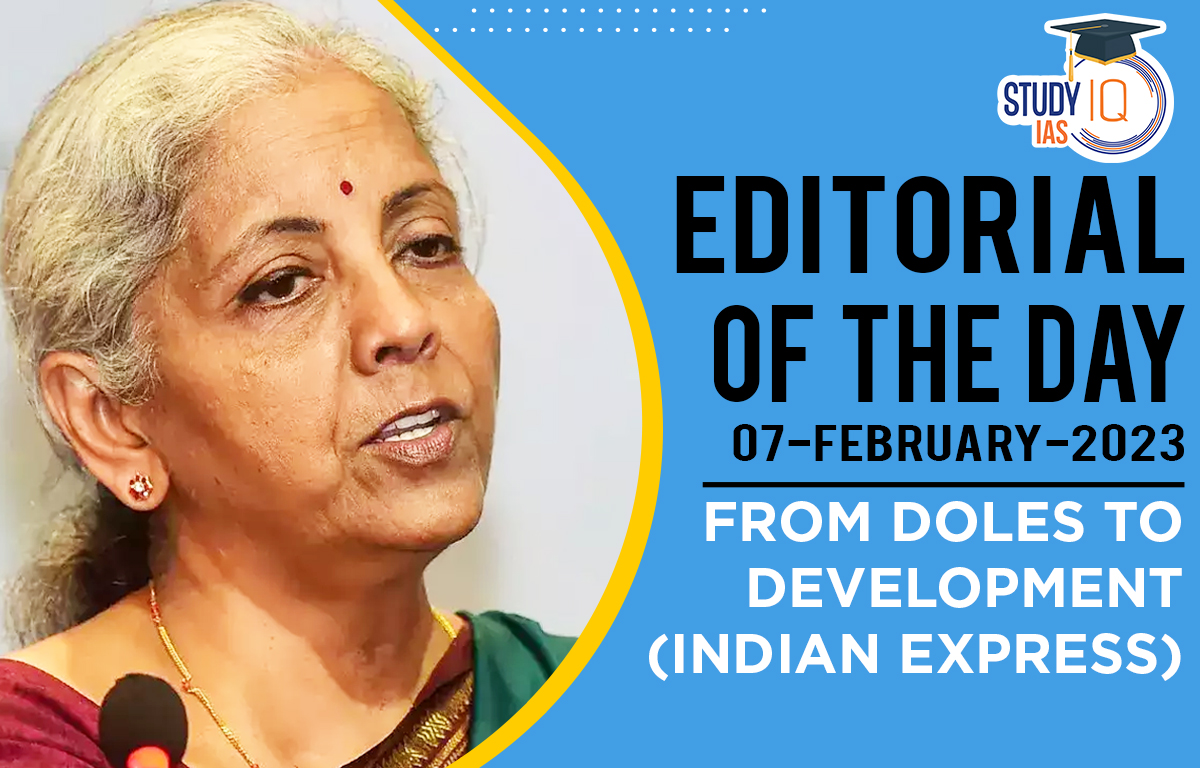Table of Contents
Context of the Article: The author compliments the Finance Minister for taking a bold step to reorient support in the agri-food-rural space from doles towards development.
Author’s Views
- The budget proposal was growth-oriented, asset-creating, and inclusive to develop better infrastructure and create more productive jobs.
- There is a drastic cut in food and fertilizer subsidies and also reduction in expenditure on MGNREGA in 2023-24 compared to the revised estimates (RE) of 2022-23.
- This does not mean that there will be a decrease in agriculture and rural spending because the savings from these freebies have been redirected towards more productive expenditures on railways, roads, rural housing, and Jal Shakti. This will help rural India through its multiplier effects.
Areas of Government’s Expenditure
- Focus on Gati Shakti to reduce the cost of logistics: Logistics and supply chain costs account for around 12 percent of the GDP in India compared to the global average of 8 percent.
- Railway outlay in budget is up by 48.6 percent in 2023-24. Road transport and highways have been given a higher capital outlay.
- Improving connectivity through rail, road, air, and waterways will surely improve the competitiveness of Indian products, including that of agricultural produce in global markets, and also help in taming inflation.
- PM Awas Yojana (Gramin) – Focus on Critical asset creation: The overall outlay for PM Awas Yojana has increased by 172.4 percent.
- The scheme not only provides housing to all but it also ensures permanent asset creation for rural households and provides the dignity of life while creating more jobs in rural India.
- This marks a big step forward in reorienting subsidies towards rural infrastructure development.
- Focus on Jal Jeevan Mission: This is primarily to supply safe drinking water through taps, mostly in rural areas.
- This will not only help contain waterborne diseases but also save time and energy for women who have to walk long distances to fetch water.
- An increase of 27.3 percent is also seen in the outlay for Jal Jeevan Mission (JJM) for 2023-24.
- Focus on Skill Development – Pradhan Mantri Kaushal Vikas Yojana 4.0: It aims to empower the “Amrit Peedhi” and provide skills to lakhs of youth within the next three years.
- It envisages on-job training, forging partnerships with the industry, and aligning courses with the needs of the industry.
- The Pradhan Mantri Kaushal Vikas Yojana also targets to cover new age courses for an industry like coding, AI, robotics, mechatronics, and 3D printing.
- The outlay for the purpose has gone up by 85 percent in 2023-24.
- Focus on Agriculture: Creation of Agri-Focused Accelerator Fund and digital public infrastructure for agriculture as an open-source, open-standard, and interoperable public good.
- This will enable inclusive and farmer-centric solutions by providing information services for crop planning and health and improving access to farm inputs, credit, and insurance. Farmers will be able to arrive at better crop estimates and get market intelligence.
- A positive step towards promoting high-value horticultural crops was announced under the Atmanirbhar Clean Plant Programme which aims to boost the availability of disease-free, quality planting material.
Conclusion
- The creation of storage facilities and value chain infrastructure remains a challenge in rural areas.
- There is a need to double up investment in agriculture research for creating more productive, climate-resilient, and competitive agriculture in India.


 SSC CGL Exam 2025 Apply Online Starts Ap...
SSC CGL Exam 2025 Apply Online Starts Ap...
 Daily Quiz 19 April 2025
Daily Quiz 19 April 2025
 Vehicle-to-Grid (V2G) Technology and its...
Vehicle-to-Grid (V2G) Technology and its...





















